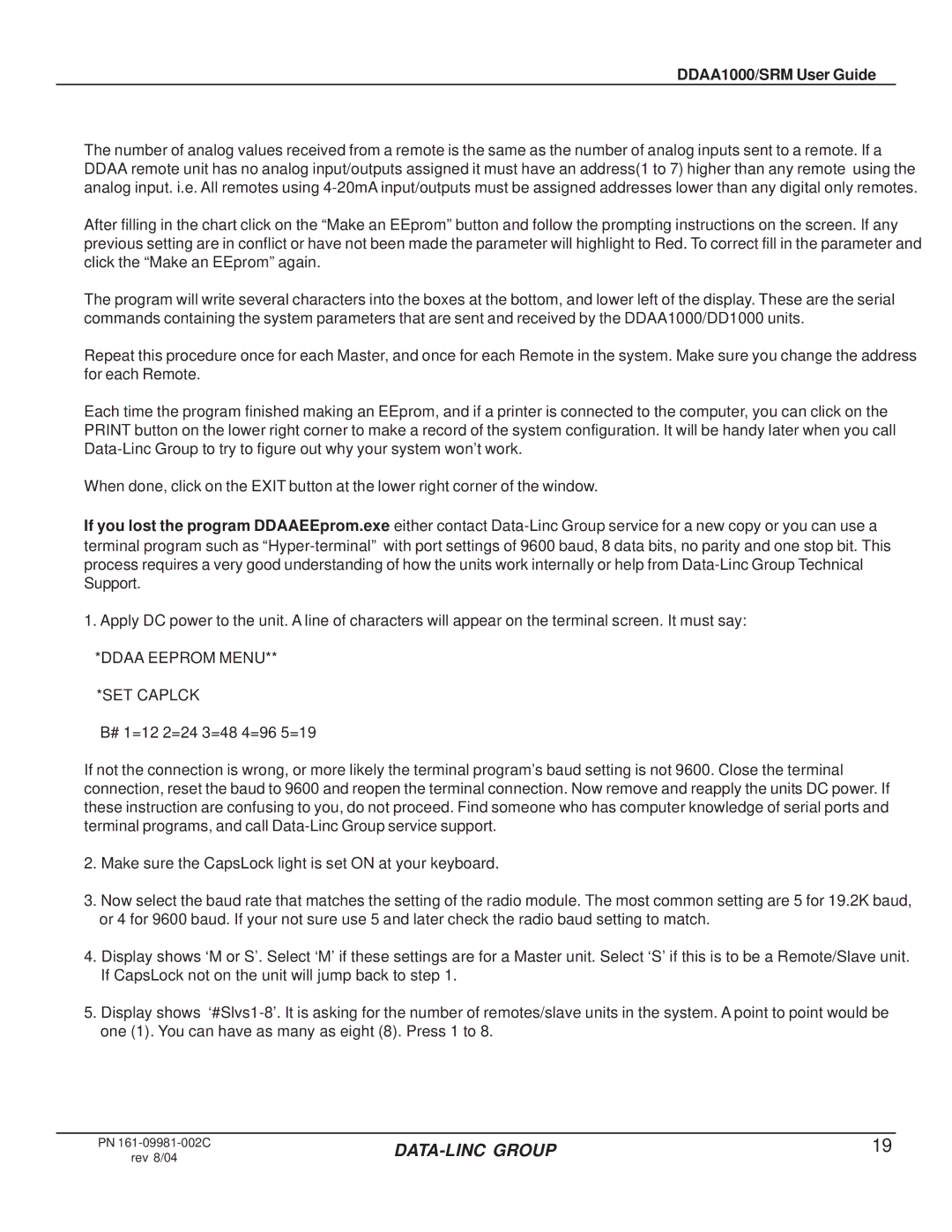
DDAA1000/SRM User Guide
The number of analog values received from a remote is the same as the number of analog inputs sent to a remote. If a DDAA remote unit has no analog input/outputs assigned it must have an address(1 to 7) higher than any remote using the analog input. i.e. All remotes using
After filling in the chart click on the “Make an EEprom” button and follow the prompting instructions on the screen. If any previous setting are in conflict or have not been made the parameter will highlight to Red. To correct fill in the parameter and click the “Make an EEprom” again.
The program will write several characters into the boxes at the bottom, and lower left of the display. These are the serial commands containing the system parameters that are sent and received by the DDAA1000/DD1000 units.
Repeat this procedure once for each Master, and once for each Remote in the system. Make sure you change the address for each Remote.
Each time the program finished making an EEprom, and if a printer is connected to the computer, you can click on the PRINT button on the lower right corner to make a record of the system configuration. It will be handy later when you call
When done, click on the EXIT button at the lower right corner of the window.
If you lost the program DDAAEEprom.exe either contact
1.Apply DC power to the unit. A line of characters will appear on the terminal screen. It must say:
*DDAA EEPROM MENU** *SET CAPLCK
B# 1=12 2=24 3=48 4=96 5=19
If not the connection is wrong, or more likely the terminal program’s baud setting is not 9600. Close the terminal connection, reset the baud to 9600 and reopen the terminal connection. Now remove and reapply the units DC power. If these instruction are confusing to you, do not proceed. Find someone who has computer knowledge of serial ports and terminal programs, and call
2.Make sure the CapsLock light is set ON at your keyboard.
3.Now select the baud rate that matches the setting of the radio module. The most common setting are 5 for 19.2K baud, or 4 for 9600 baud. If your not sure use 5 and later check the radio baud setting to match.
4.Display shows ‘M or S’. Select ‘M’ if these settings are for a Master unit. Select ‘S’ if this is to be a Remote/Slave unit. If CapsLock not on the unit will jump back to step 1.
5.Display shows
PN
rev 8/04
19 |
